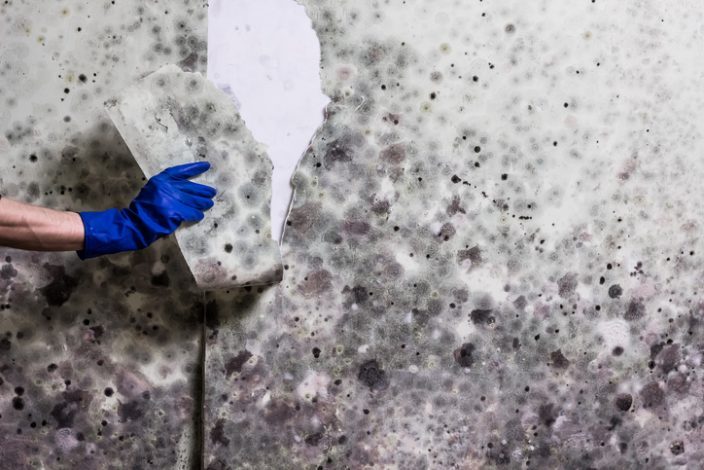Advice on What to Do After Mold Remediation
Advice on What to Do After Mold Remediation
Blog Article
Your Ultimate Guide to Article Mold Remediation Methods
In the consequences of mold invasion, recognizing just how to successfully eliminate the mold and stop its reoccurrence is critical for preserving a healthy indoor environment. From choosing the ideal cleansing and disinfecting approaches to carrying out approaches for long-term mold prevention, each action in the removal journey plays a critical function in making certain a successful result.
Comprehending Post-Mold Remediation Process
After completing the mold and mildew removal process, it is essential to understand the post-mold remediation strategies that are needed to make sure a effective and comprehensive cleanup. Once the mold and mildew has actually been gotten rid of, the following step involves cleansing and decontaminating the influenced locations to avoid any type of regrowth of mold. This consists of making use of specialized cleaning up agents to clean down surface areas and kill any kind of continuing to be mold spores. It is vital to dry the location totally to dissuade the growth of mold and mildew in the future (Post Mold Remediation). Appropriate ventilation and dehumidification can assist in this process.
Furthermore, carrying out a final evaluation post-remediation is essential to guarantee that all mold and mildew has been effectively gotten rid of. This evaluation needs to involve a thorough visual check along with possibly air sampling to verify the lack of mold spores airborne. Additional removal may be needed if the examination reveals any remaining mold and mildew. Enlightening owners on precautionary measures such as regulating dampness degrees and without delay attending to any kind of water leaks can aid preserve a mold-free atmosphere.
Efficient Cleaning and Disinfecting Approaches

Preventing Future Mold Growth

Importance of Appropriate Ventilation
Appropriate ventilation plays an essential role in preventing dampness accumulation, a key consider mold development within indoor environments. Efficient ventilation systems assist get rid of excess humidity from the air, decreasing the chances of mold and mildew spores finding the dampness they require to spread and germinate. Without appropriate air flow, indoor spaces can become a breeding ground for mold, causing possible wellness risks and architectural damages.
By ensuring proper air flow, air flow systems can likewise help in drying damp locations quicker after water damage or flooding events, even more discouraging mold development. Post Remediation verification. In areas like washrooms, basements, kitchen areas, and attics where dampness degrees often tend to be higher, setting up and preserving reliable air flow systems is essential in avoiding mold and mildew infestations

Surveillance and Upkeep Tips
Provided the crucial role that correct ventilation plays in avoiding mold and mildew development, it is necessary to establish effective surveillance and maintenance tips to make sure the continued capability of air flow systems. Regular examinations of air flow systems should be performed to look for any signs of clogs, leaks, or breakdowns that might impede correct air flow. Surveillance moisture levels within the residential property is also critical, as high moisture can contribute to mold and mildew growth. Mounting a hygrometer can aid track humidity degrees and alert home owners to any type of spikes that might need focus. Furthermore, ensuring that air filters are consistently cleaned up or changed is vital for keeping why not try this out the effectiveness of the air flow system. Carrying out a schedule for regular maintenance jobs, such as duct cleansing and heating and cooling system examinations, can assist protect against problems prior to they intensify. By remaining mindful and positive to the condition of ventilation systems, homeowner can effectively reduce the danger of mold and mildew regrowth and preserve a healthy and balanced interior environment.
Final Thought
To conclude, post-mold remediation techniques are essential for ensuring a risk-free and clean setting. Recognizing the process, implementing effective cleansing and sanitizing methods, avoiding future mold growth, keeping correct ventilation, and regular surveillance are all critical actions in the removal process. By following these standards, you can efficiently remove mold and prevent its return, promoting a healthy and balanced living or functioning area for all occupants.
In the results of mold and mildew invasion, understanding how to efficiently eradicate the mold and mildew and prevent its reoccurrence is vital for maintaining a healthy and balanced indoor atmosphere. Once the mold has actually been gotten rid of, the following step includes cleansing and sanitizing the affected areas to protect against any regrowth of mold and mildew - what to do after mold remediation. After removing visible mold and mildew development, it is essential to cleanse all surface areas in the affected area to remove any kind of remaining mold spores. To better enhance mold prevention procedures, it is essential to deal with underlying problems that originally led to mold and mildew development.Given the vital duty that correct air flow plays in preventing mold growth, it is critical to develop effective monitoring and maintenance suggestions to guarantee the continued performance of air flow systems
Report this page